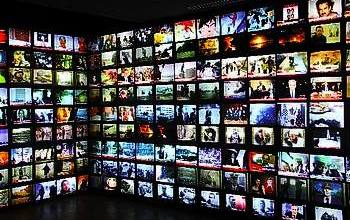By Bobby Ramakant and Sandeep Pandey
A survey was recently carried out by a student of IIM, Indore, Shrey Singh of the front page of five newspapers of Lucknow – two English and three Hindi – to see the nature of coverage during recent election campaign for general elections. The newspapers studied were Dainik Jagran, Amar Ujala, Hindustan, Times of India and Hindustan Times. Five political parties were picked up for study – BJP, Congress, Samajwadi Party, Bahujan Samaj Party and Aam Aadmi Party. The period covered was from 16 April to 30 April, 2014, essentially the period before the polling after candidates were finalized and symbols allotted. The points which were looked into included the number of times the name of a lead campaigner of party were printed in titles, number of times name of a party was printed in titles, area covered by advertisements put in by a party, number of times photos of lead campaigner were published, number of news of a political party were published, etc.
The results of the survey were not very surprising. There was a general feeling even during the campaign that media was giving BJP disproportionate coverage and this was probably happening because the Corporate India was backing the party or more specifically its PM candidate Narendra Modi.
The most startling finding of the survey is that 98.06% advertisement space on front page was occupied by BJP. Rest was taken up by Congress while the remaining three parties chose not to put in any front page advertisements. BJP covered more than half the space of news coverage on the front page with 51.54% followed by Congress, SP, AAP and BSP with 28.50%, 11.62%, 5.24% and 3.09%, respectively. Number of Narendra Modi’s photos appeared 38.42% times, of Rahul Gandhi 32.02%, Mulayam Singh Yadav 18.72%, Arvind Kejriwal 6.90% and Mayawati 3.94% times. BJP’s name appeared in a title 57.14% times, Congress’s 25.51%, SP 8.16%, AAP 5.10% and BSP 4.08%. Narendra Modi’s name appeared in a title 44.48% times, Rahul Gandhi’s 33.14%, Mulayam Singh Yadav’s 13.08%, Arvind Kejriwal’s 6.98% and Mayawati’s 2.33% times. The number of advertisements published by BJP were 91.43% while that of Congress were 8.57%. Number of news related to BJP were 42.52%, that of Congress were 30.21%, SP 16.13%, AAP 6.45% and BSP 4.69%.
While disproportionate coverage of BJP in comparison with other parties raises serious questions about the neutrality of media it also requires investigation to find out the reason for this. It doesn’t appear to be merely a case of paid news. It looks as if things have gone much beyond that. Was it only the power of corporates that influenced the coverage or was there something else working behind the scene?
Between AAP and BSP, whereas AAP clearly got more coverage in media, BSP got twice the number of votes than AAP, even though it may not have won any seat at all and AAP got four. Hence, the media appears to be biased against BSP, which has been its long standing complaint.
Association for Democratic Reforms (ADR) has recently come out with a report on donations received by six national parties based on the Income Tax returns filed by them for the financial year 2012-13. Indian National Congress has received the largest donation of Rs. 425.69 crores followed by BJP with Rs. 324.16 crores. Given the stupendous performance of BJP in the just concluded elections it is quite likely that BJP may have surpassed Congress in terms of total donations received during the last financial year or the current one. But there would not be a large difference between the donations received by two big parties. The BSP received Rs. 87.63 crores in 2012-13. This implies that all these parties had money to put in front page advertisements. Among all, the Congress was in a position to easily compete with the BJP in terms of spending money. The question then arises how did BJP manage to corner 98.60% space and Congress got merely 1.40%. Were the remaining parties denied space on front page? In terms of number of advertisements BJP put in 91.43% whereas Congress had 8.57%. This implies that BJP got more space in proportion to the number of advertisements put in by them. Was all this done in a planned manner? If yes, then which other forces were at work in addition to the capitalists?
The ADR report also reveals that the parties received a total of Rs. 99.14 crores in the form of donations greater than Rs. 20,000. Of this 72% or Rs. 70.97 was contributed by private corporations. Hence the influence of capitalists over political parties is obvious and this was probably India’s first election in which the corporates have moulded public opinion to get a PM of their choice elected by the people.
It is interesting to note that Election Commission had constituted Media Certification and Monitoring Committees to check the cases of paid news at district and state levels. 74 complaints were received during the election campaigning by the UP state committee. However, no meeting of this committee took place to look into these complaints. This shows that EC did not take the role of media seriously so far as violations of code of conduct were concerned.
While Election Commission has enforced its code of conduct very strictly elsewhere, when it comes to media it simply chooses to ignore it. We need guidelines from Election Commission for media coverage during elections so that powerful parties are not able to influence it the way BJP was able to do in the last elections. There is a Press Council guideline for media for election coverage but quite obviously none of the newspapers or channels take it seriously.






















